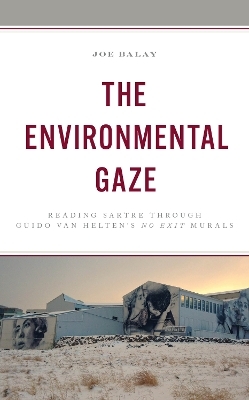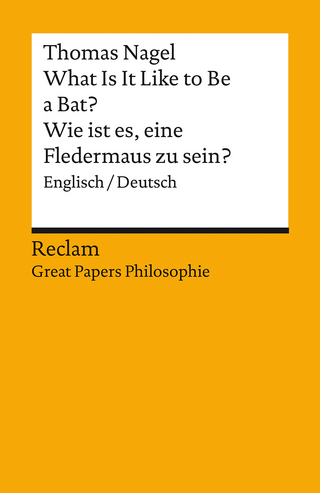
The Environmental Gaze
Reading Sartre through Guido van Helten's No Exit Murals
Seiten
2023
Lexington Books/Fortress Academic (Verlag)
978-1-6669-3980-4 (ISBN)
Lexington Books/Fortress Academic (Verlag)
978-1-6669-3980-4 (ISBN)
The Environmental Gaze: Reading Sartre through Guido van Helten’s No Exit Murals offers an environmental reading of Sartre’s theory of the gaze. Challenging the common association of his work with Western anthropocentrism, Balay argues that the Sartrean gaze involves an inter-human-natural mode of perception: the environmental gaze.
Following Guido van Helten’s provocative reimagination of Jean-Paul Sartre’s No Exit, The Environmental Gaze: Reading Sartre through Guido van Helten’s No Exit Murals offers an environmental reading of Sartre’s theory of the gaze (le regard). Joe Balay argues that while Sartre is commonly associated with the longstanding humancentric bias in Western thinking, a closer reading shows that his phenomenology of vision involves a powerful environmental story. On the one hand, this is demonstrated by the way that the social worldview contributes to a progressive alienation from our bodies and the natural world around us, culminating in the loss of the Earth in Sartre’s play. On the other, Balay argues that the artwork serves as a pivotal interruption of this alienation, inviting us to see the world anew through an inter-human-natural mode of perception that we might call the environmental gaze. In this way, this book makes a strong case for the significance of Sartre’s work and for the place of art in facing our environmental reality today.
Following Guido van Helten’s provocative reimagination of Jean-Paul Sartre’s No Exit, The Environmental Gaze: Reading Sartre through Guido van Helten’s No Exit Murals offers an environmental reading of Sartre’s theory of the gaze (le regard). Joe Balay argues that while Sartre is commonly associated with the longstanding humancentric bias in Western thinking, a closer reading shows that his phenomenology of vision involves a powerful environmental story. On the one hand, this is demonstrated by the way that the social worldview contributes to a progressive alienation from our bodies and the natural world around us, culminating in the loss of the Earth in Sartre’s play. On the other, Balay argues that the artwork serves as a pivotal interruption of this alienation, inviting us to see the world anew through an inter-human-natural mode of perception that we might call the environmental gaze. In this way, this book makes a strong case for the significance of Sartre’s work and for the place of art in facing our environmental reality today.
Joe Balay is associate professor of philosophy at Christopher Newport University.
Acknowledgments
Introduction
Chapter 1: Nature
Chapter 2: Body
Chapter 3: Environment
Chapter 4: Art
Conclusion
Afterword
Appendix: Interview with Guido van Helten
Bibliography
About the Author
| Erscheinungsdatum | 29.11.2023 |
|---|---|
| Sprache | englisch |
| Maße | 161 x 243 mm |
| Gewicht | 395 g |
| Themenwelt | Kunst / Musik / Theater ► Kunstgeschichte / Kunststile |
| Geisteswissenschaften ► Philosophie ► Philosophie der Neuzeit | |
| ISBN-10 | 1-6669-3980-3 / 1666939803 |
| ISBN-13 | 978-1-6669-3980-4 / 9781666939804 |
| Zustand | Neuware |
| Informationen gemäß Produktsicherheitsverordnung (GPSR) | |
| Haben Sie eine Frage zum Produkt? |
Mehr entdecken
aus dem Bereich
aus dem Bereich


